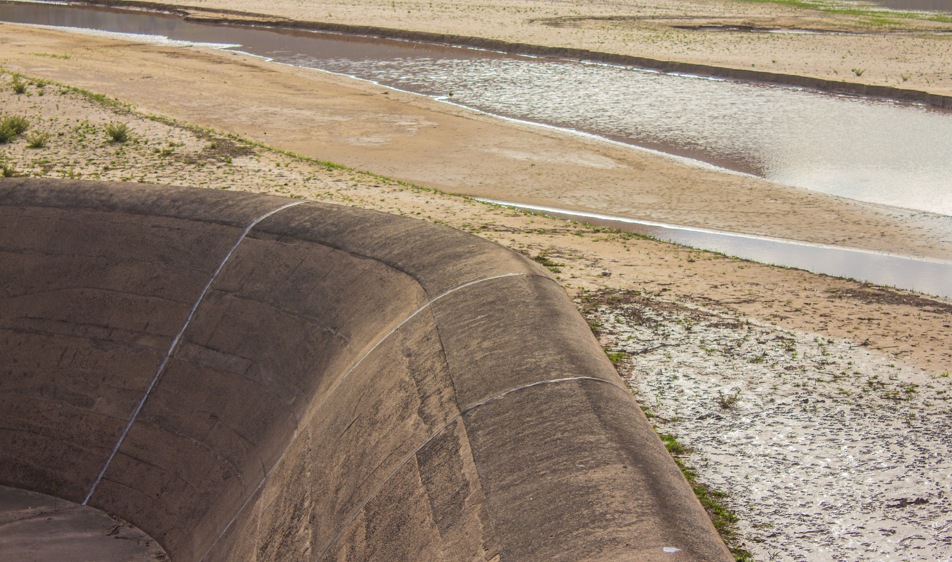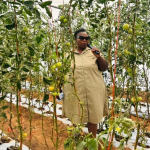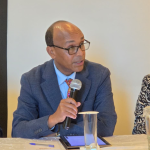Africa is standing as the epicenter of a climate emergency that it did not create. This was the resounding message from the launch of the State of Africa’s Environment 2025 Report in Addis Ababa a fortnight ago, where leaders, scientists, Journalists and international representatives gathered to lay bare the economic and social costs of climate change on the continent.
The Director of the United Nations Educational, Scientific and Cultural Organization, (UNESCO) Addis Liaison Office, Dr. Rita Bissoonauth, captured the essence of the crisis: “Africa is on the front-line of a climate emergency it did not create. Climate hazards are causing significant economic losses across the continent, with estimated average direct losses of $1.18 billion per year in Northern Africa and $1.25 billion per year in Sub-Saharan Africa. This is not just an environmental crisis; it is a profound inequality.”
The report confirms that climate change is a debt Africa did not sign up for but is paying daily. With warming at 0.3°C per decade, faster than the global average, African economies and societies are being battered by droughts, floods, cyclones, and extreme heat. These events have already slashed crop yields, destroyed infrastructure, and left millions displaced.
Water scarcity has become a recurring emergency: according to the report, 14 African countries are already facing chronic shortages and another 11 are projected to join them by the end of 2025, a crisis that could place nearly half of the continent’s 1.45 billion people at risk of severe water stress.
This is not just science on paper. Across the continent, the human face of climate debt is everywhere. Farmers in Lesotho struggling through prolonged droughts, informal settlement dwellers in Nairobi enduring record-breaking heat, and rural families in Malawi rebuilding after devastating floods all bear witness to the same truth: Africa is paying a high price for emissions released far beyond its borders.
Ethiopia’s Environment Protection Authority chief, Lelise Neme, was emphatic: “Discussing and working on issues of climate and environmental protection is not extravagance, it is a matter of existence and way of life.”
He pointed to sobering United Nations Framework Convention on Climate (UNFCCC) data showing that 16 of the 19 global hunger hot-spots in 2025 are in Eastern and Southern Africa and the Sahel.
“In South Sudan and Sudan, over 56 percent of the population is already affected by acute food insecurity. In total, more than 115 million Africans faced acute hunger in 2025, directly linked to environmental shocks exacerbated by conflict, Yet, even in the face of this burden, Africa is showing pathways of resilience.
Ethiopia’s Green Legacy Initiative, launched by Prime Minister Abiy Ahmed, has become a continental symbol of adaptation. In July 2025, the country planted a record-breaking 714.7 million seedlings in a single day, as part of a five-year target to plant 54 billion trees by 2026. The program is designed not only to capture carbon but to restore degraded landscapes, protect watersheds, and create jobs.
As Neme told the Addis gathering, “This is an African model of climate adaptation.”
But adaptation has limits without justice. Dr. Bissoonauth reminded journalists that climate justice cannot be separated from historical justice.
She pointed to the AU’s 2025 theme on Reparations, stressing that climate debt requires new forms of financing, fair partnerships, and global solidarity.
“Climate justice is inseparable from historical justice. This is a call to action, through innovative financing and public–private collaboration, to scale investment where it counts.”
The report itself details the economic weight of climate change. In addition to the billion-dollar direct losses cited for North and Sub-Saharan Africa, the report notes that the rising demand for cooling, infrastructure repair, and health responses will drive hidden costs far higher.
It continues noting that outdoor labour productivity losses in West Africa alone could amount to nine million jobs by 2030, while the World Bank estimates climate change could shave off 2–4 percent of Africa’s annual GDP by 2050 if unchecked.
For Lesotho, these figures translate into familiar struggles. When drought gripped Mafeteng between November 2024 and March 2025, farmers lost crops, livestock weakened, and hospitals rationed water. It was a reminder that the climate debt is not abstract, it is lived in empty fields, dry taps, and lost incomes.
According to the Lesotho National Adaptation Plan, droughts alone have been estimated to reduce total GDP by 1-4%, while soil erosion knocks off another 2-3% of agricultural GDP (which translates to around 1% of total GDP).
The International Monetary Fund also note that the Lesotho disaster relief costs are high, noting that during a significant El Niño-induced drought in in 2015,2016, and flooding in 2010, 2011, relief costs amounted to USD 38 million and USD 67 million, representing 1.7% and 3.2% of GDP, respectively.
“Repeated exposure to natural disasters affects fiscal and macro-financial stability, with severe consequences for food security of low-income households. Natural disasters severely disrupt agriculture and livelihoods, increase net food imports, and ultimately worsen the fiscal stance.
“Based on data available for the two extreme disasters, the cost of disaster relief for the El Niño–induced drought in FY15/16 and the floods in FY10/11 was estimated at US$38 million (LSL584 million, 1.7 percent of GDP) and US$67 million (LSL462.7 million, 3.2 percent of GDP), respectively. The average annual cost of disaster relief is about US$19.3 million (1 percent of GDP in FY19/20), most of which is borne by the government with limited donor support that was provided only for extreme disasters,” IMF said.
UNESCO’s Bissoonauth challenged African journalists to play their part in telling these stories: “Reports don’t change the world; people do, especially those who turn complex evidence into public understanding and demand for action. Report through a human lens: humanise the science and scientify the human story.”




